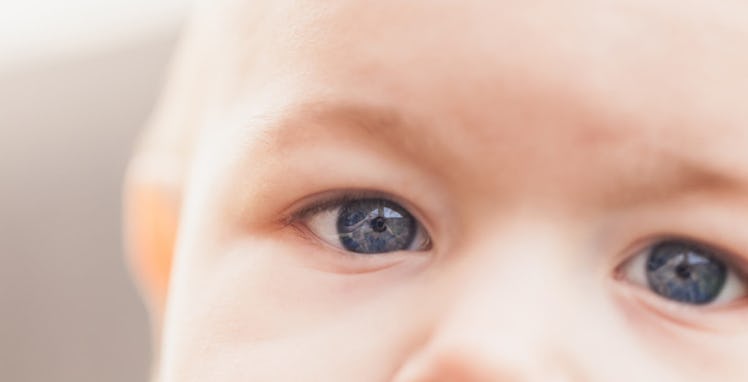The Genetic Science Behind Whose Eyes Your Kid Will Have
Their looks are more than a parent mashup.

Before the “trying” starts, there’s always that fun game couples have where they talk about what they hope their future kid will look like. She hopes they’ll have his eyes. He hopes they’ll have her hair. Nobody hopes they’ll inherit that unibrow.
It’s a fun game, but to understand which traits a child will inherit is extraordinarily hard to answer. Here’s a bit of the knowns and unknowns behind genetic inheritance, and what really belongs to whom.
Gene Genie
To understand how this works, science goes well past the cellular level. Yes, cells are what build the physical body and keep it working. However, those construction orders to build the man’s nose or the woman’s hair is held in a chemical called deoxyribonucleic acid, known to everyone as DNA.
- Not to get ninth grade science here, but the building blocks of DNA are “bases” known to be adenine, cytosine, guanine, and thymine.
- Bases pair off in sequences across the classic double helix — ala the opening credit sequence of X-Men.
- These sequences form over 300,000 genes that determine the creation of complex proteins.
- Those proteins, like hormones and antigens, make the body function (or, in many cases, malfunction).
Every cell in the body essentially has the same genes. But certain genes are “switched” off or on depending on what the cells are supposed to do — so a nose looks and performs like a nose, rather than a spleen.
Cool Chromosomes
Genes are packaged in chromosomes. Every cell in the body has 23 paired chromosomes for a total of 46. The main difference is this: in guys, the 23rd pair contains a Y chromosome. This prompts the body to perform like a man’s. If the 23rd pair has two X chromosomes, you’re a lady.
How does one end up with 46 paired chromosomes? Half came from the mother. Half came from the father. And the only cells in the human body that don’t have paired chromosomes are the egg and the sperm. When those get together, they pair up and get to the busy work of making another human.
Inheritance Is Not a Face Blender App
Given that this genetic information pairs from both mom and dad, one would think the resulting kid would be some equal mash-up. Luckily, genetics is nothing like a grotesque face-blending app. This has to do with dominant and recessive genes. Gregor Mendel, aka the father of genetics, discovered this when he was breeding pea plants. He found physical traits can disappear and then reappear in later generations. This is as true in humans as it is in plants. When chromosomes pair up at this critical moment during fertilization, it sets into motion the genes that will eventually determine all those physical traits.
Everyone is a Dominant (or Recessive) Mutant
Genes mutate, which why during the course of human evolution, there’s been a rich tapestry of physical human characteristics. As people boned, these traits were passed down. So humans have different genes for various traits — Some are recessive and some are dominant. Here’s what happens when these sequences pair up at conception:
- A dominant gene can pair up with a recessive gene and be expressed
- Two dominant genes can pair up and be expressed
- Two recessive genes can pair up assuring their expression
Does that mean a prominent nose will dominate that kid’s genetics? Nope. The above is true only for traits expressed by a single gene. If someone can roll their tongue, for instance, that’s a dominant gene that codes for tongue rolling. If their earlobes don’t hang free, they have the recessive gene that causes earlobes to be stuck to the head.
Traits like eye color, hair color, and nose size are all controlled by the interplay of multiple genes, with only some of them being dominant or recessive. In eye color, the gene that codes for dark eyes is dominant, while the gene that codes for light eyes is recessive. A brown-eyed couple is more likely to have a brown-eyed child, but it’s not guaranteed.
Unsolved Mysteries
Geneticists are still unsure exactly which genes code for which physical traits. Even if a genetic test is conducted on an embryo (as can happen for some undergoing in vitro fertilization), what that embryo would look like as a teen is unknown. That’s mostly because science has focused their energy squarely on finding genes that lead to the disease processes.
Will that change in the future? It will. But should that be a reason to celebrate? Most bioethicists agree that parents knowing what a child kid will be, and choosing only the embryos that reflect what they want, is ethically horrifying.
So in that sense, perhaps it’s better people can only make educated guesses about their kid’s traits. Although, if you want to know about the nose, there are only a few simple dominant genes when it comes to the schnoz. So it’s not that they have “your nose,” it’s “they have most of the population’s nose.”
This article was originally published on